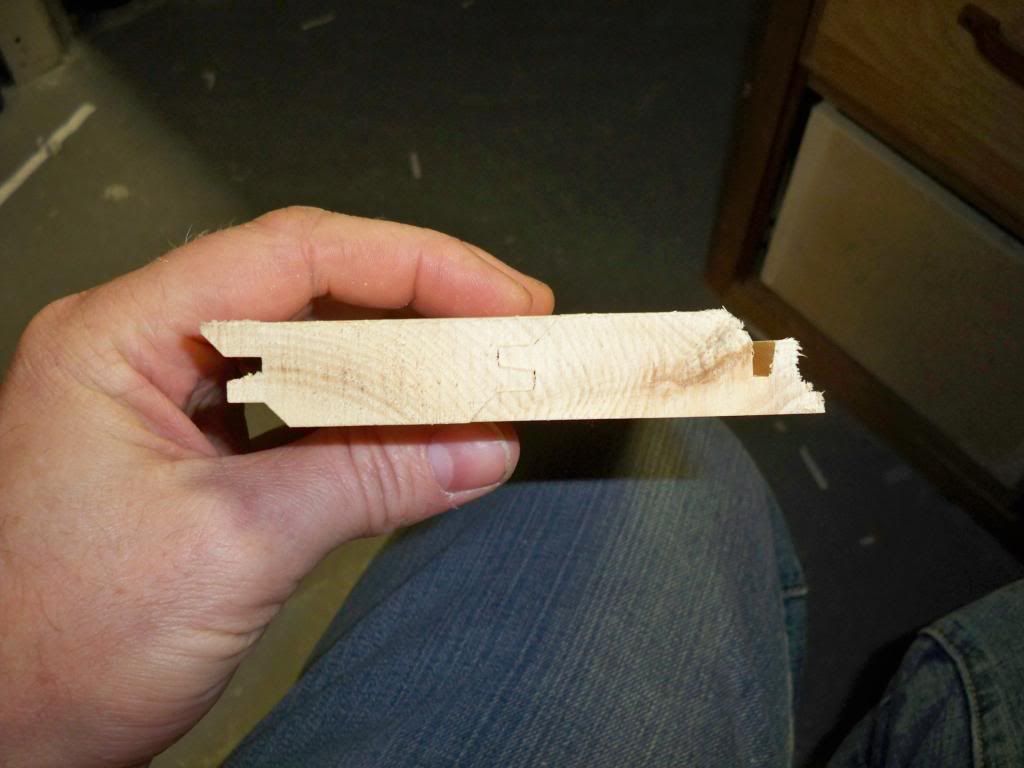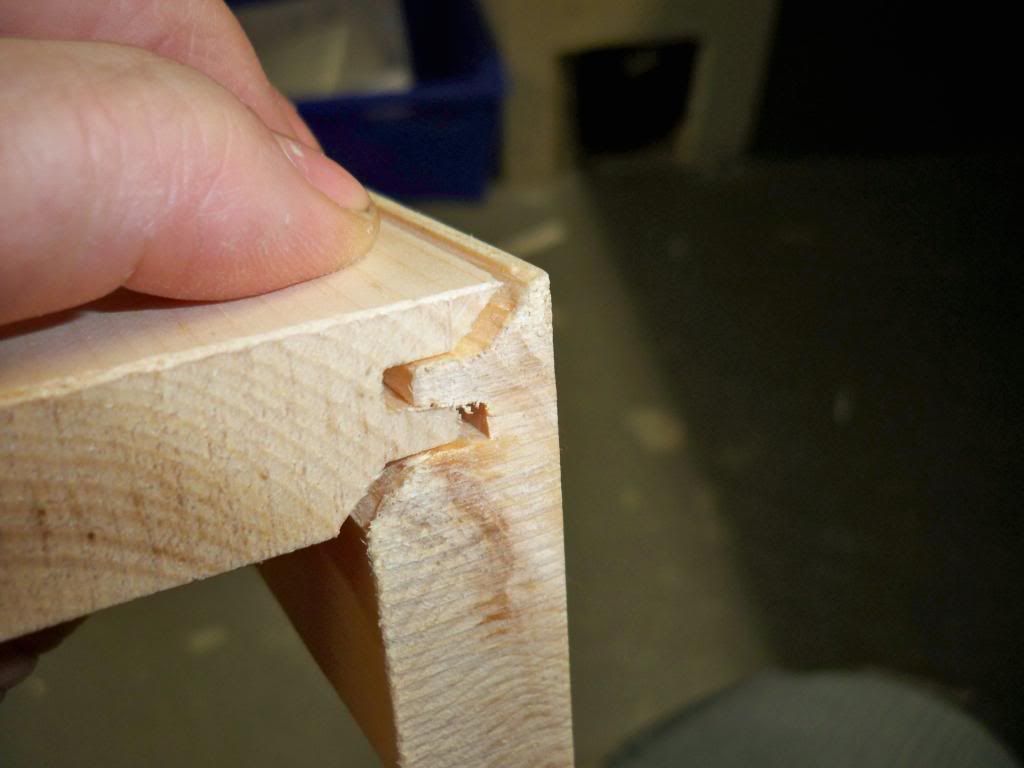So i've read all about these joints and the bits used to create them and have taken my time in setup and testing, but I'm having a problem that i don't quite understand.
The bit height is correct, of this I am sure, as you can see in the photo.
however the issue is with the second piece that gets cut...there's a small but unacceptable flat area on the edge of the piece cut vertically.
The only way to get rid of this, is by adjusting the fence back further. Since the edge of the other piece is already being cut right to a sharp edge, moving the fence back would mean that the cutter would now narrow the first boards width by the same amount as the flat you can see, and it would mean that the edge of that first board would no longer ride on the face of the fence making good result impossible.
Is there something I'm missing or is it simply possible that the bit is too small for 3/4" stock even though the manufacturer says it is possible...






 Reply With Quote
Reply With Quote


